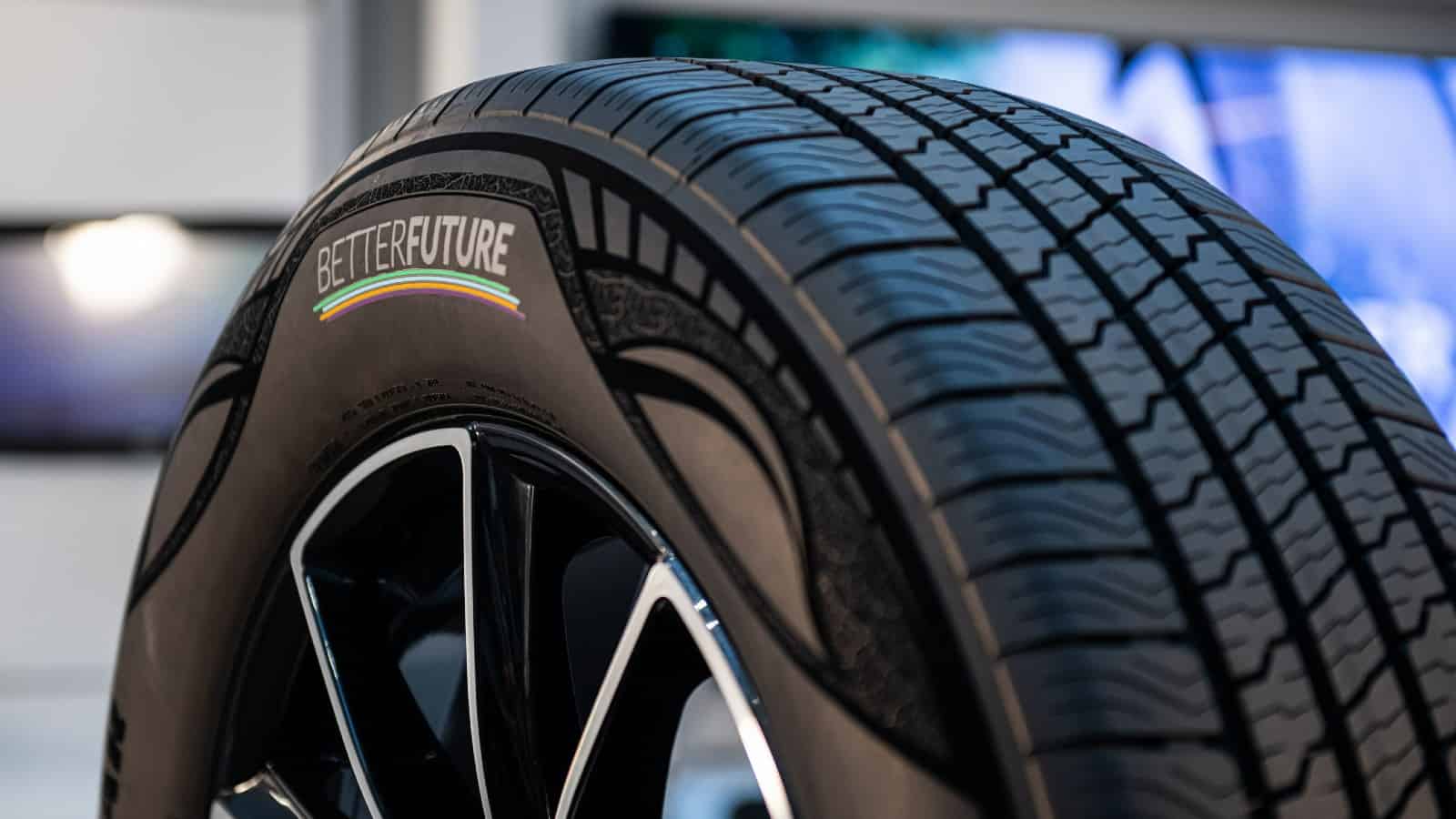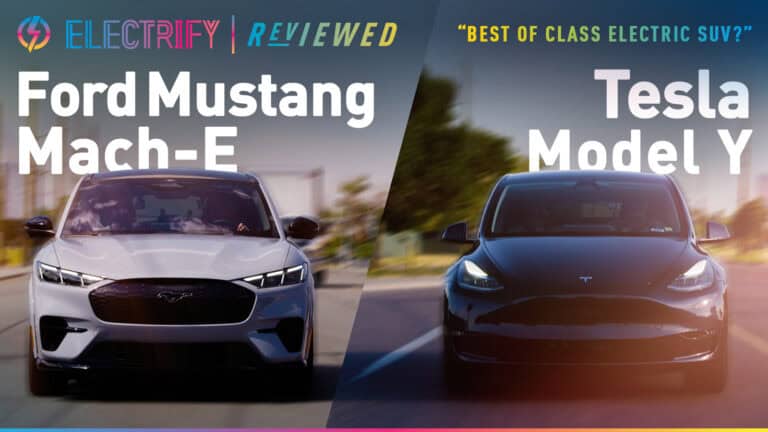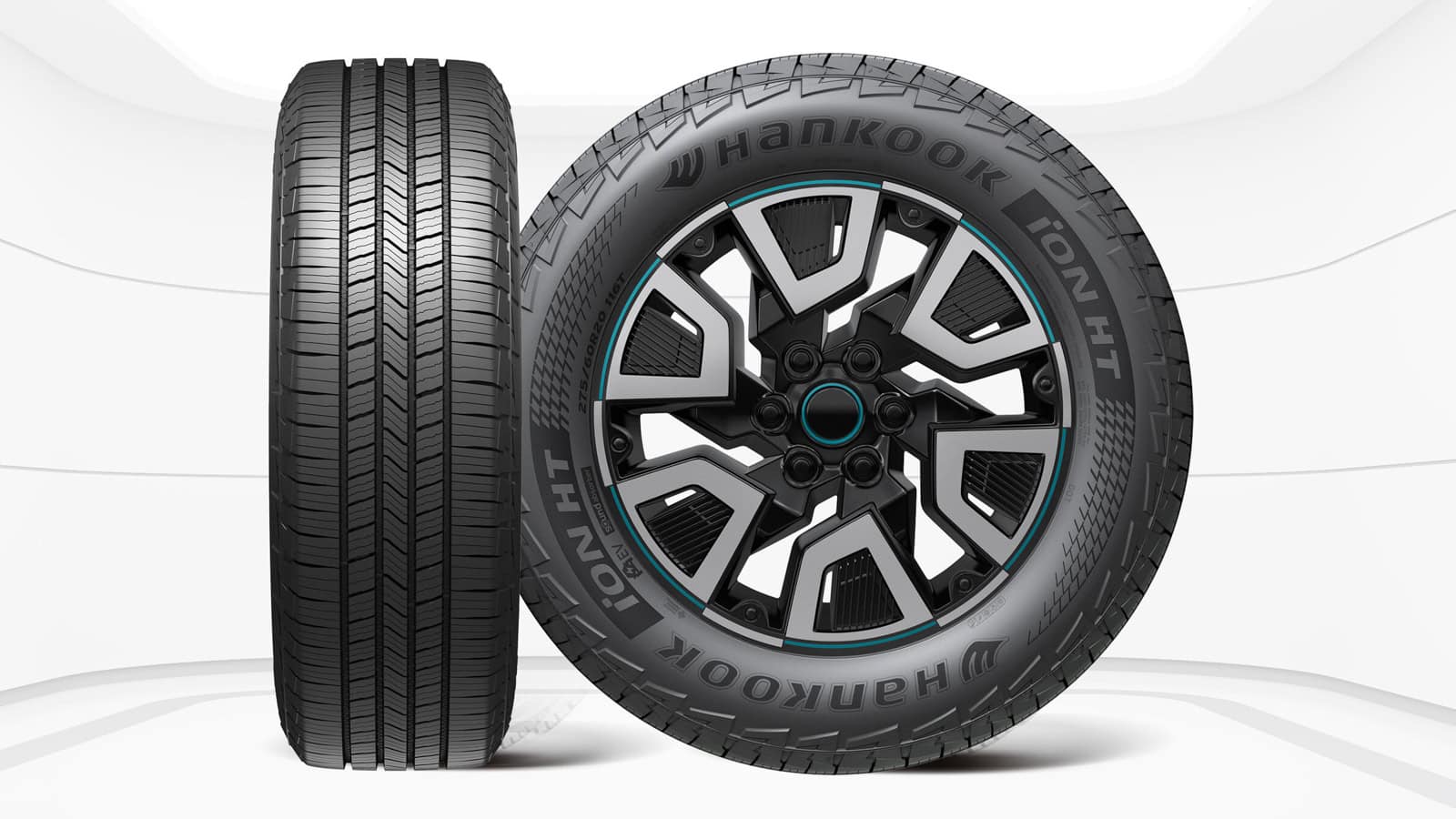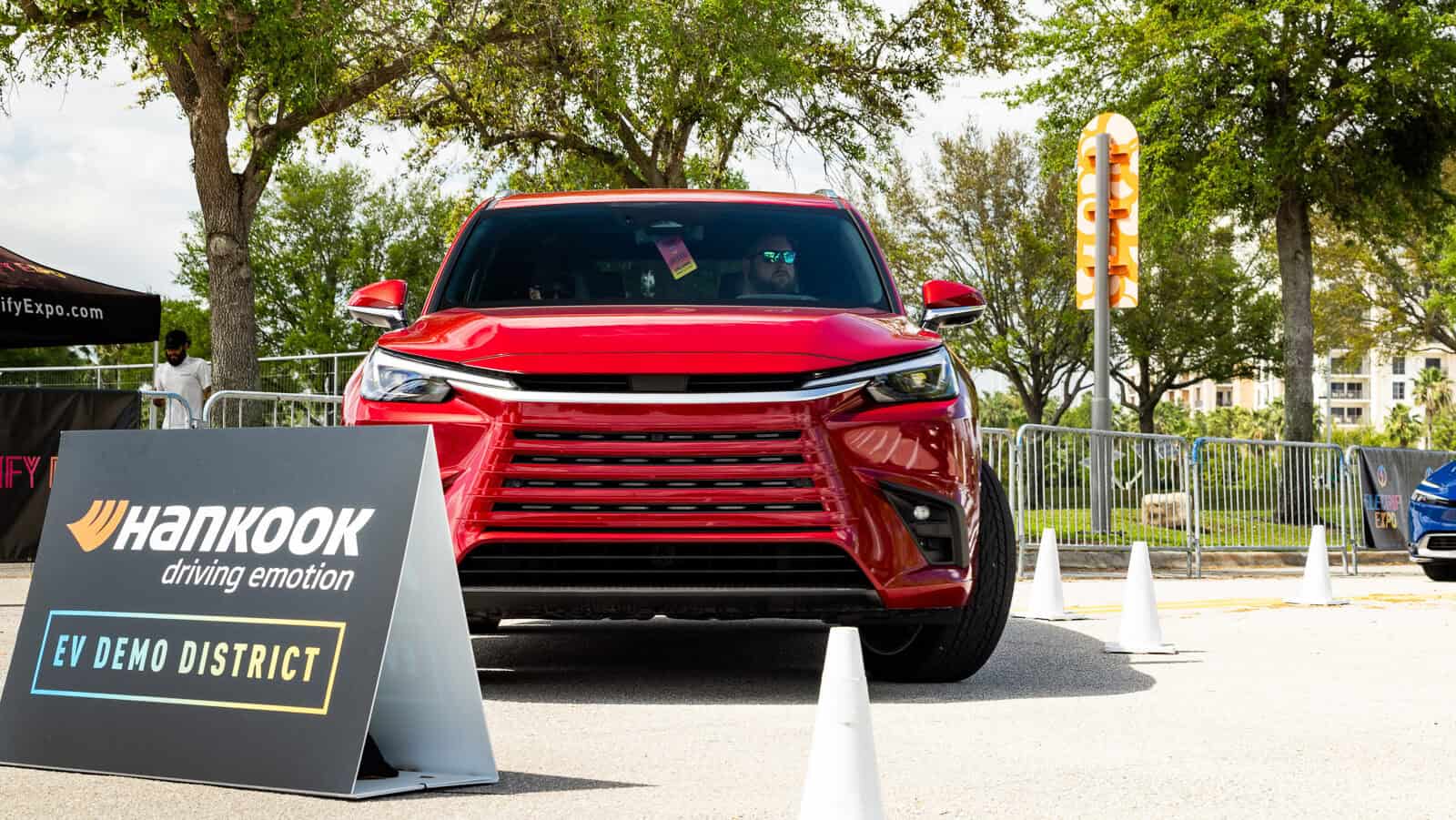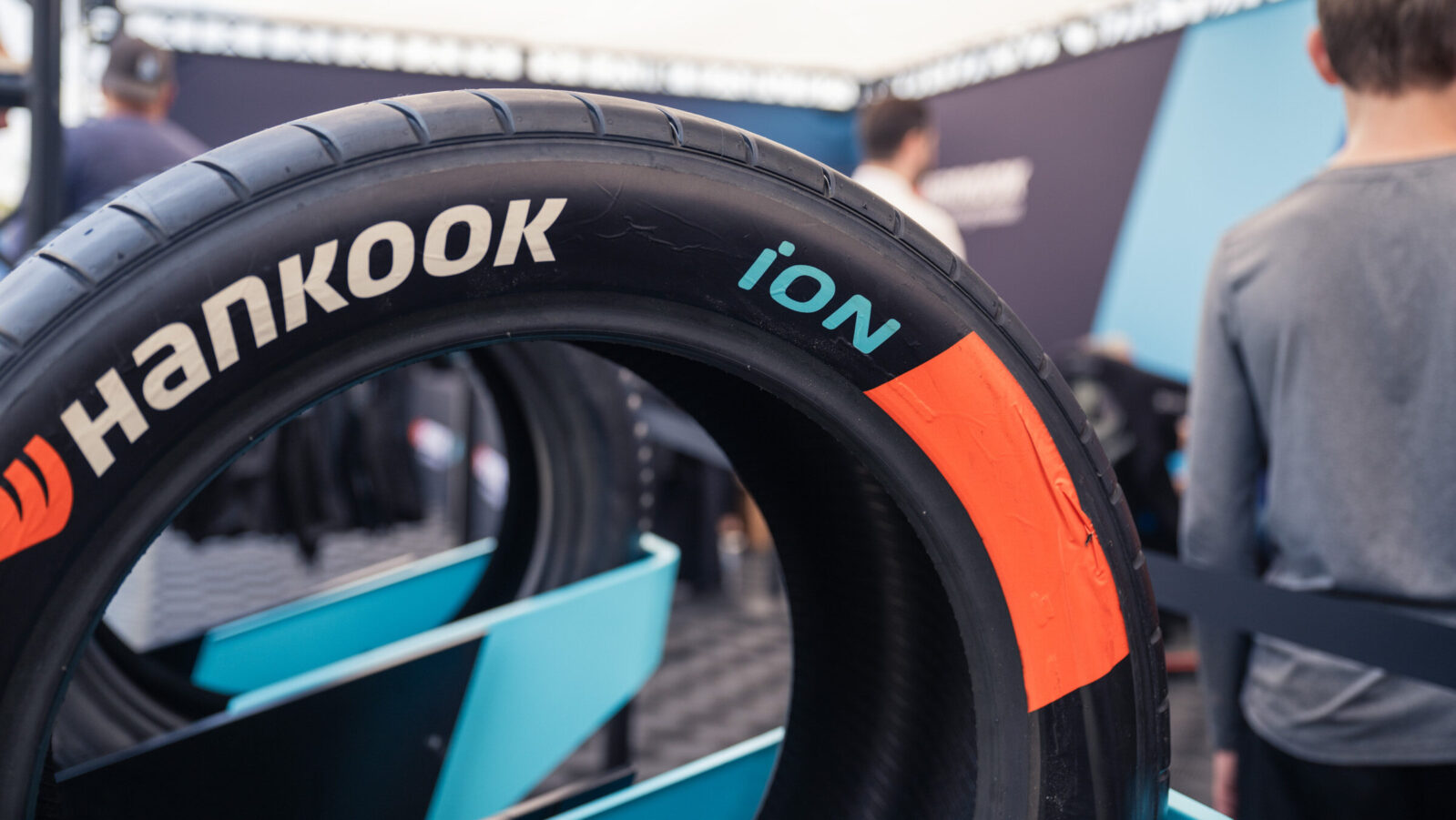Goodyear has announced plans to bring a new tire to market that’s made with up to 90% sustainable and recyclable materials.
The tire shown here is “just” a demonstrator, but the demo tire has already passed all the necessary regulatory testing, as well as Goodyear’s own, internal tests. This demonstration tire also tested to have lower rolling resistance when compared to the reference tire, made with traditional materials. Lower rolling resistance means this demonstration tire has the potential to offer better fuel savings and EV range, as well as an overall reduction in carbon footprint.
“We continue to make progress toward our goal of introducing the first 100% sustainable-material tire in the industry by 2030,” said Chris Helsel, senior vice president, Global Operations and Chief Technology Officer. “The past year was a pivotal one toward achieving this goal. We researched new technologies, identified opportunities for further collaboration and utilized our team’s tenacity to not only demonstrate our capabilities to produce a 90% sustainable-material tire, but to also produce a tire with up to 70% sustainable-material content this year. Our team continues to showcase its innovation and commitment to building a better future.”
Some of the sustainable materials Goodyear is putting into use in the rand’s new “sustainable” tire products include:
- Carbon black, which is included in tires for compound reinforcement and to help increase their life, has traditionally been made by burning various types of petroleum products. Goodyear’s 90% sustainable-material demonstration tire features four different types of carbon black that are produced from methane, carbon dioxide, plant-based oil and end-of-life tire pyrolysis oil feedstocks. These carbon black technologies target reduced carbon emissions, circularity and the use of bio-based carbons, while still delivering on performance.
- The use of soybean oil in this demonstration tire helps keep the tire’s rubber compound pliable in changing temperatures. Soybean oil is a bio-based resource that helps to reduce Goodyear’s use of petroleum-based products. While nearly 100% of soy protein is used in food/animal feed applications, a significant surplus of oil is left over and available for use in industrial applications.
- Silica is an ingredient often used in tires to help improve grip and reduce fuel consumption. This demonstration tire includes a high-quality silica produced from rice husk waste residue (RHA silica), a byproduct of rice processing that is often discarded and put into landfills.
- Polyester is recycled from post-consumer bottles by reverting the polyester into base chemicals and reforming them into technical grade polyester used in tire cords.
- Resins are used to help improve and enhance tire traction performance. In this demonstration tire, traditional petroleum-based resins are replaced with bio-renewable pine tree resins.
- Bead wire and steel cords provide reinforcement in the structure of a radial tire. This demonstration tire uses bead wire and steel cord from steel with high-recycled content, which is produced using the electric arc furnace (EAF) process. The utilization of the EAF process allows for steel to be produced with reduced energy use and higher recycled content. The EAF process has the potential for lower greenhouse gas emissions in comparison with steel produced using a blast furnace.
- ISCC certified mass balance polymers from bio- and bio-circular feedstock are also included in this tire.
All that good news shouldn’t be taken to mean that Goodyear’s current product line is not sustainable, however. Fully eight of the brand’s current passenger and racing tires use soybean oil, and the brand has more than doubled its use of RHA silica in its product lines since 2018.
With the introduction of a new, production-ready EV tire packing 70% sustainable-material content on the near horizon, Goodyear is demonstrating a real commitment towards building a better automotive industry for the future.

SOURCE | IMAGES: GOODYEAR.
FTC: We use income-earning auto affiliate links. Learn more.


